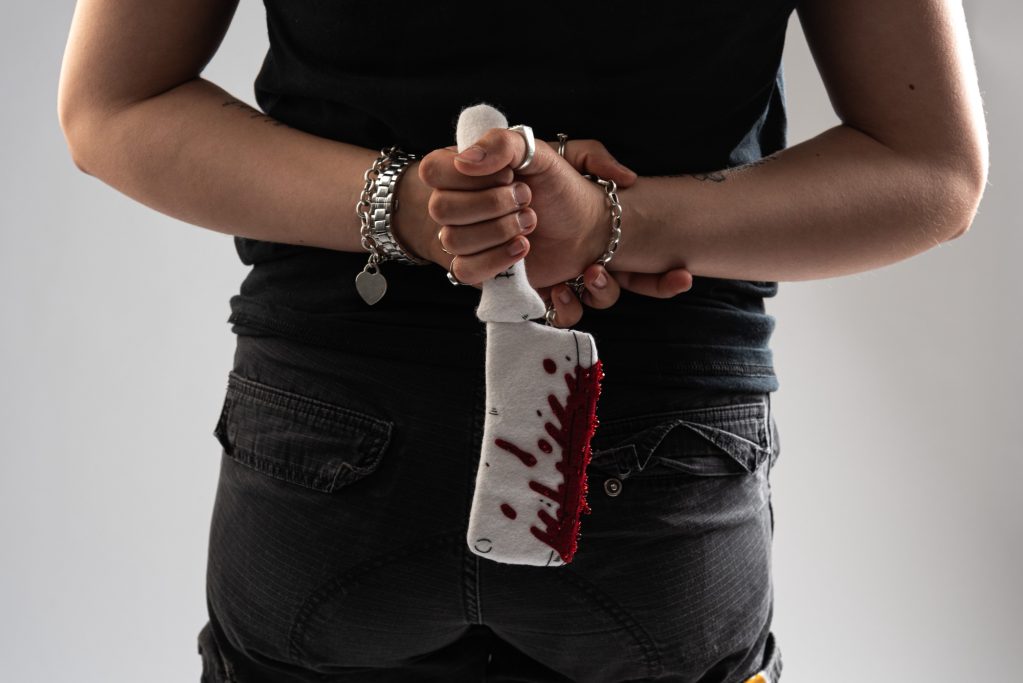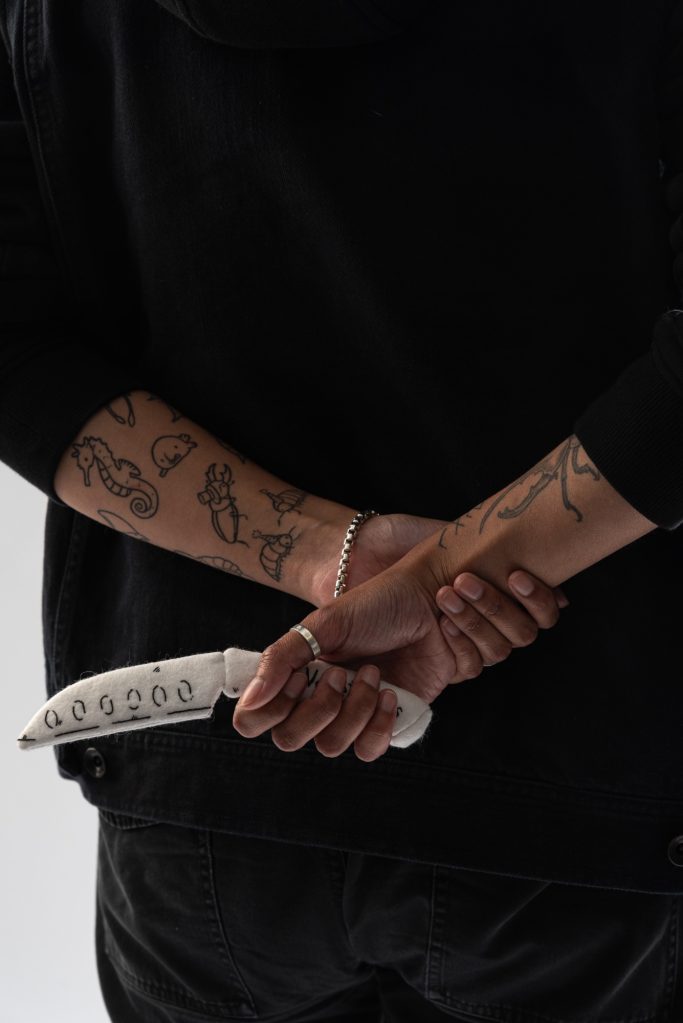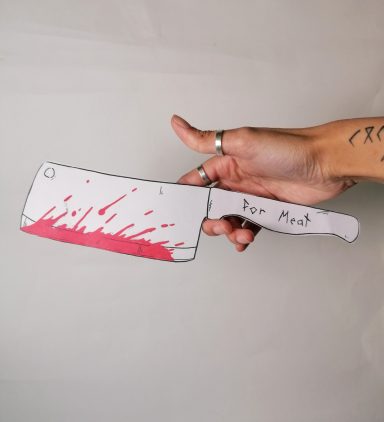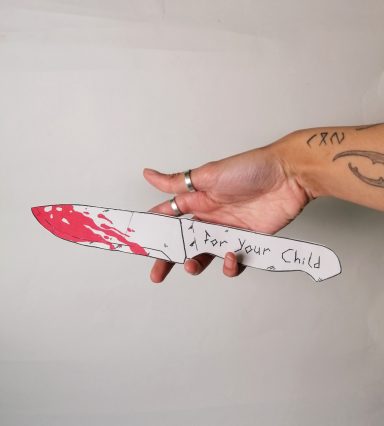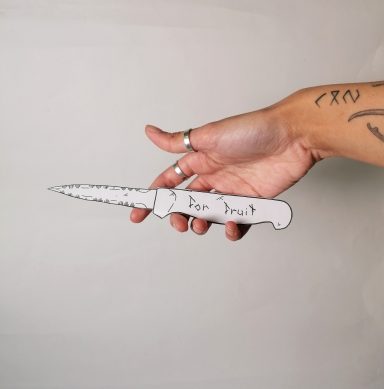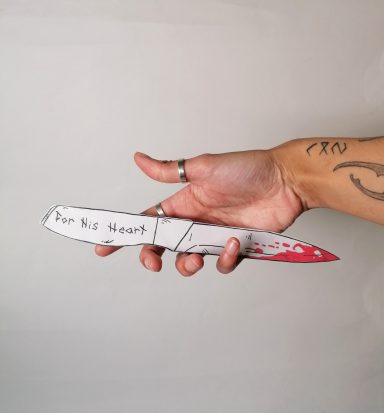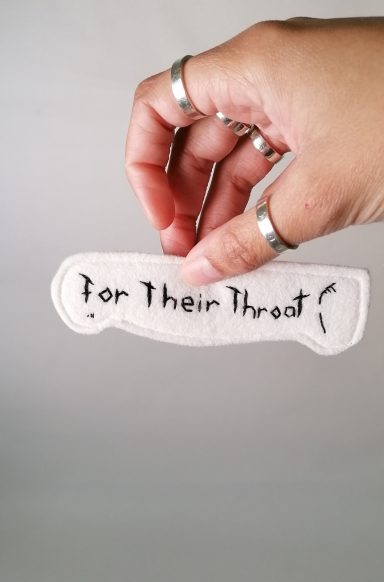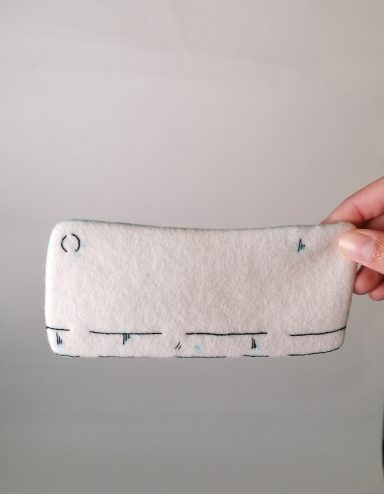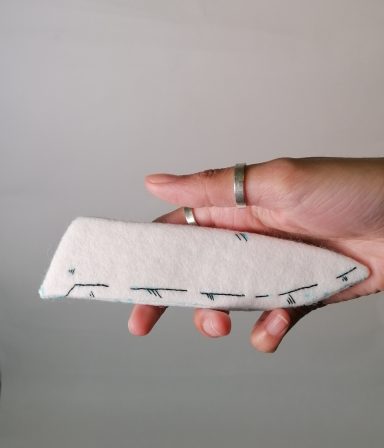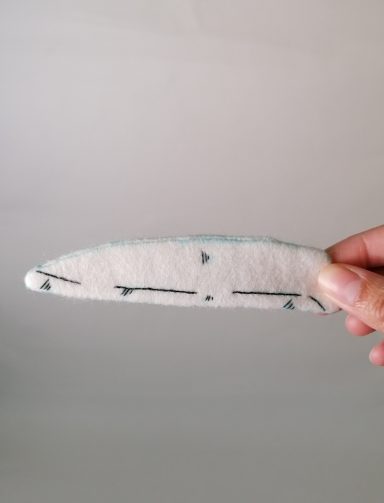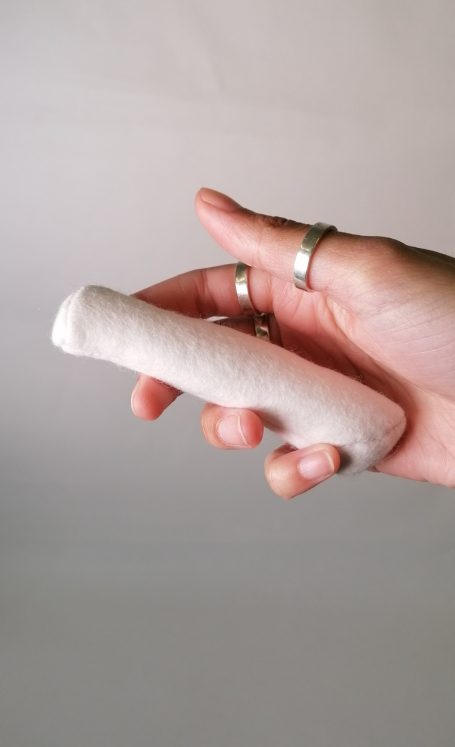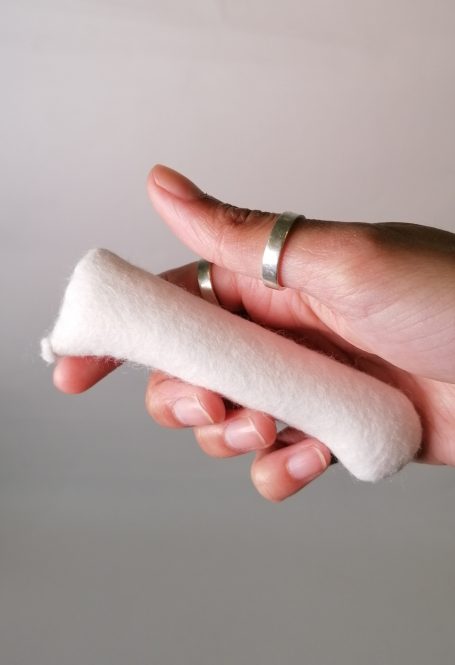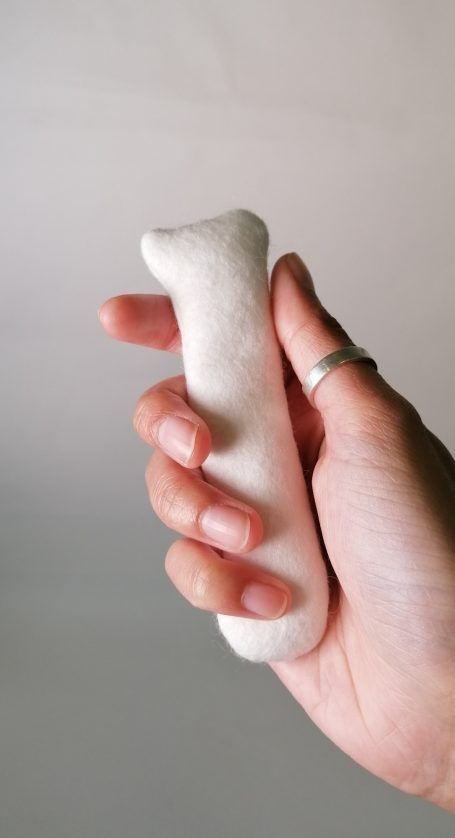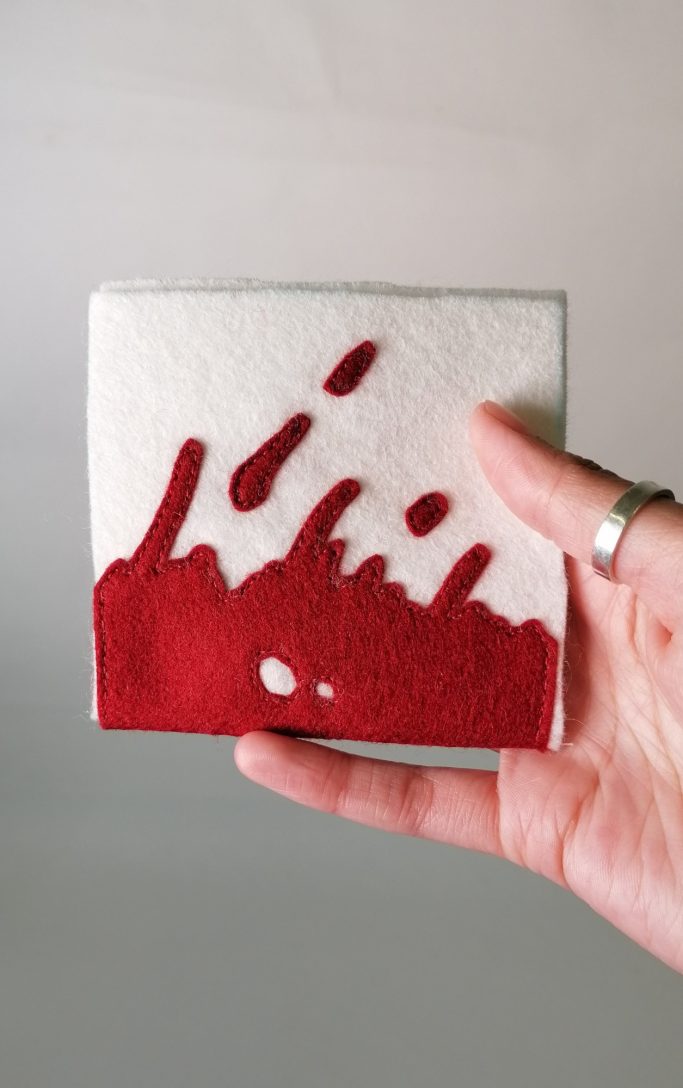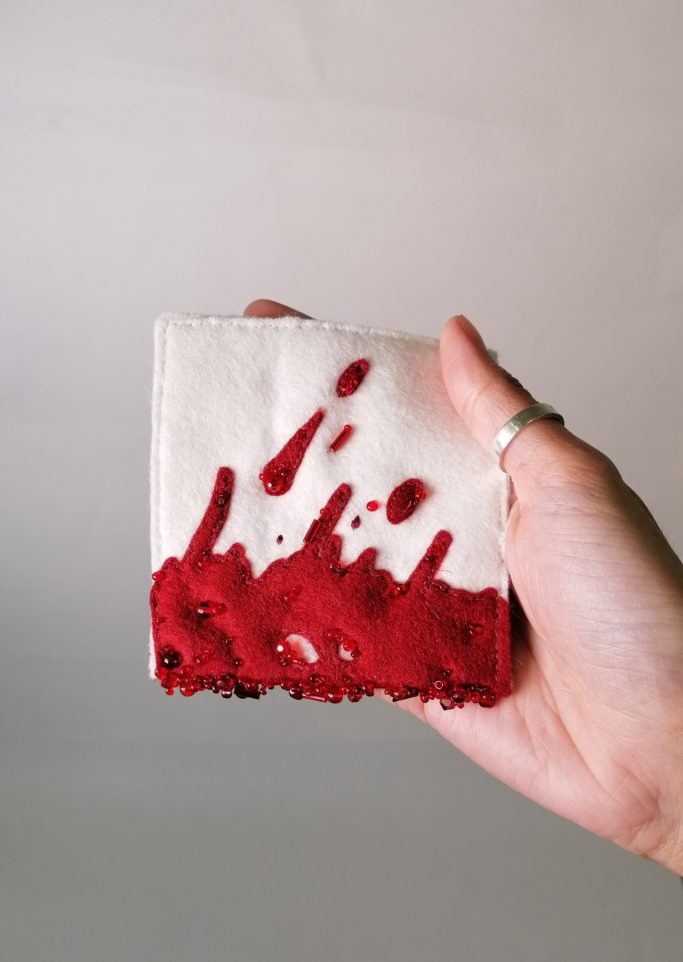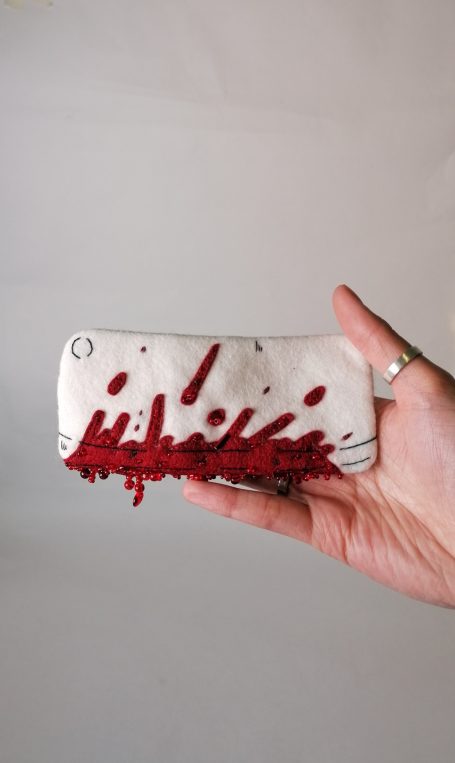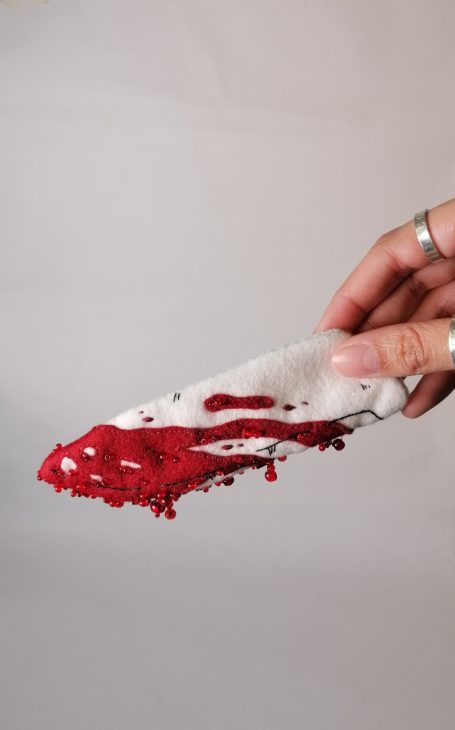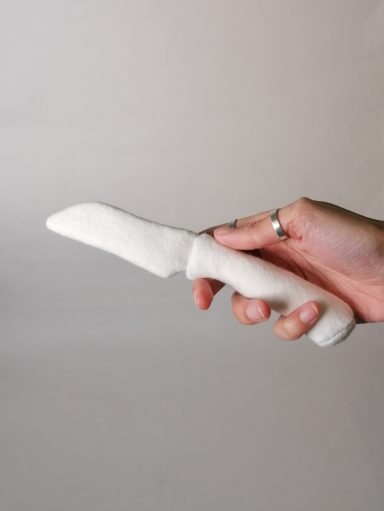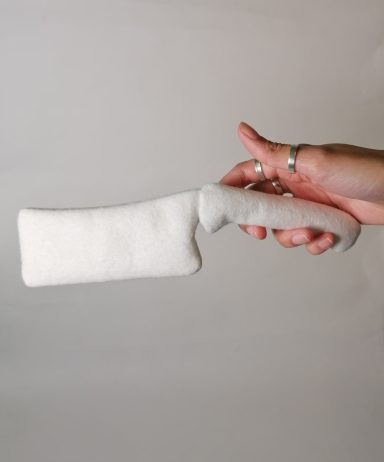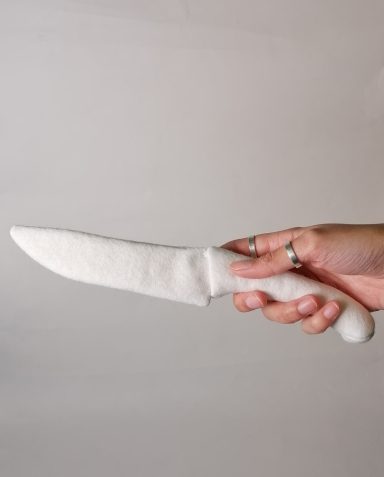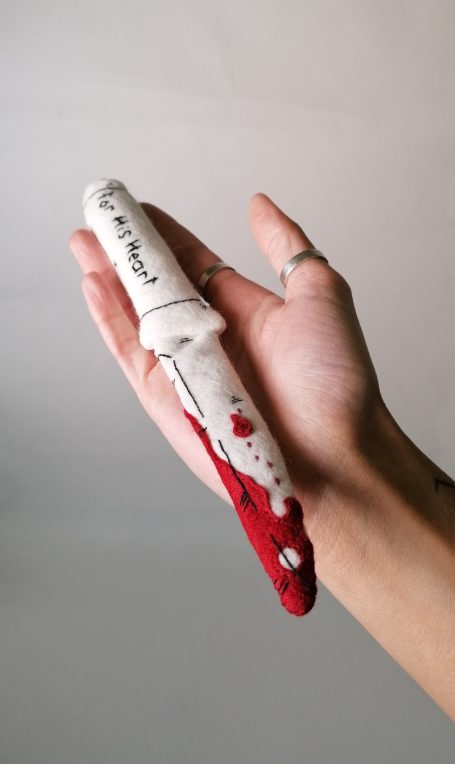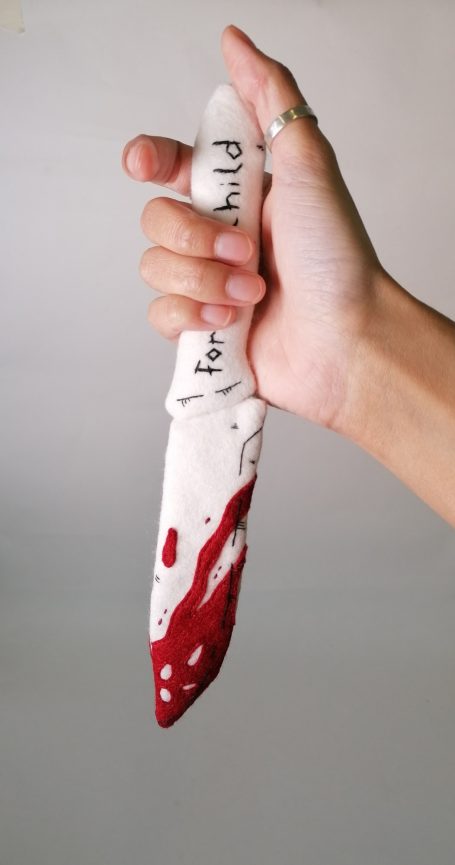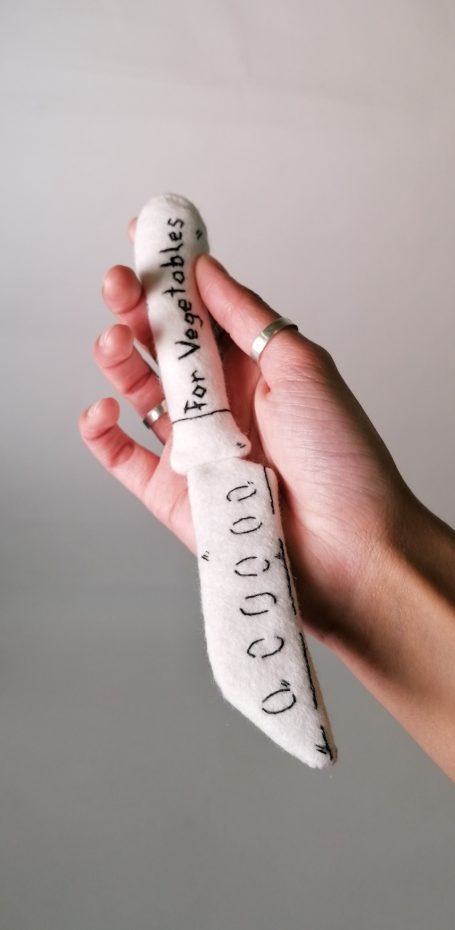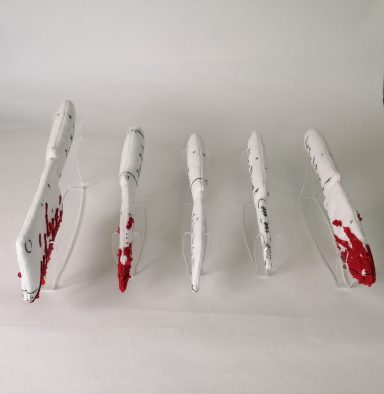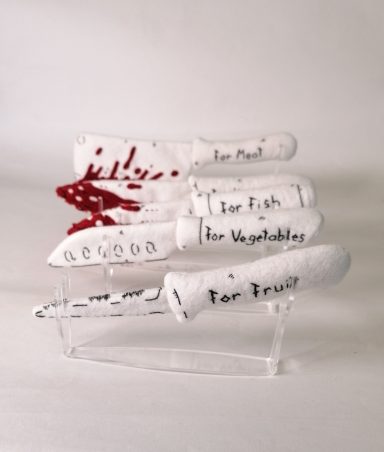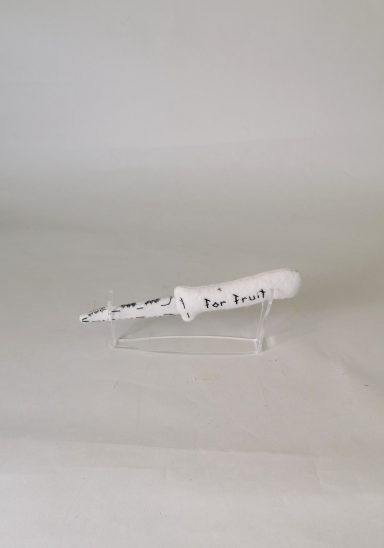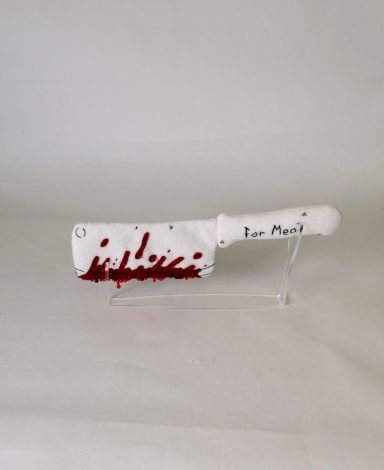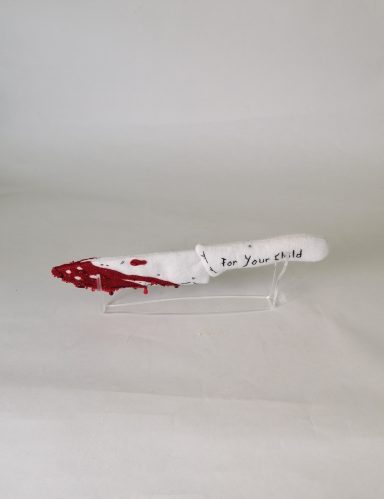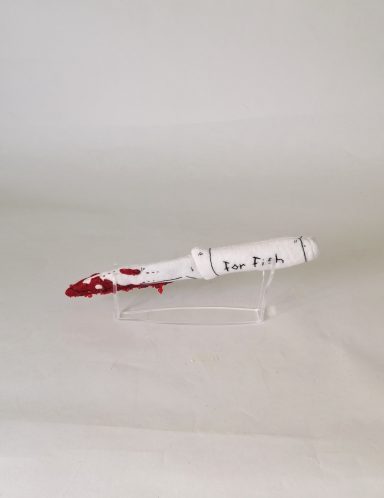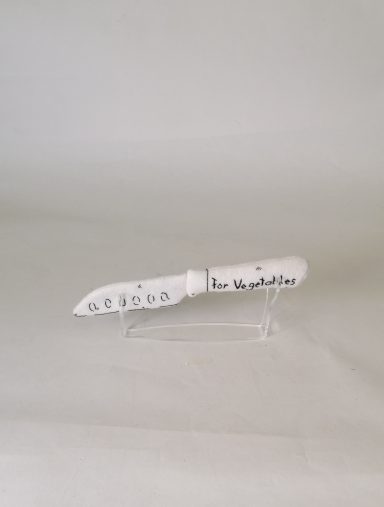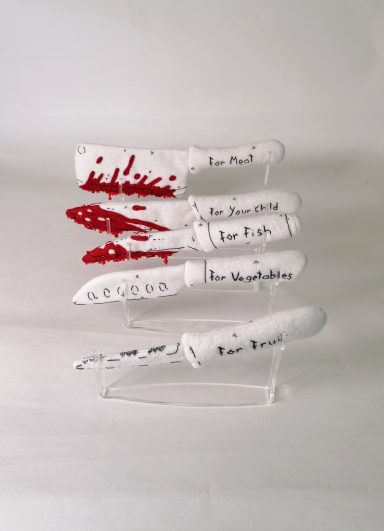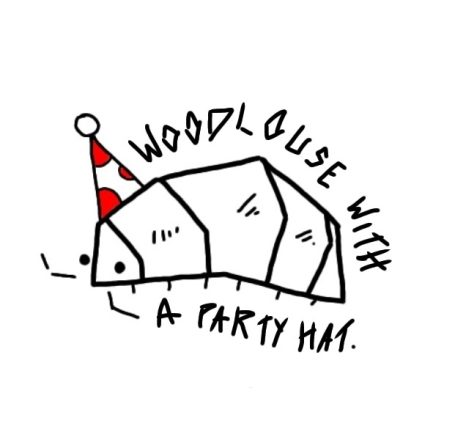Point Made
This project was made for the final module of my BA (Hons) degree at Hereford College of Arts [2025].
Materials - White felt, red felt, embroidery thread, glass beads, plastic bean filling.
Estimated production time - 28 Hours
About this project.
Point Made explores a commentary on the increase in youth knife crime. Using glass bead embellishment on wool felt, embroidered and connected by hand, domestic kitchen knives are recreated as three-dimensional illustrations. The development for this project came from my own concerns surrounding the safety of my generation and the future of the next; looking at how we have been failed by those meant to protect us. I aim to use my stitching to spread awareness of this ongoing issue, drawing attention to these adult themes through a comforting tactile toy aesthetic.
Process.
Here's some details about the production of this project to help you follow my train of thought over the 4 months of its production.
Click to see full images in detail.
After researching for my inspiration I started my process by designing some illustrations. These were my choice of kitchen knives, which were measured to make them size accurate. After outlining them I tested the blood design until I was satisfied with its appearance. I used these as visual paper maquettes, making them double sided to help with understanding my next step of pattern making.
This stage was testing all the details separately. I wanted to make sure my embroidery details fit within the pattern sizes before started testing the full scale samples. These became really helpful references further into my testing as I used them for measurements and size comparisons.
Testing the handles was the most difficult and most important aspect to get right. The designs changed a lot through this stage as I tried to find the best form to replicate the ergonomic shape. This stage also tested the fill levels, finding the right balance between enough filling to hold its form but retain some level of give when held.
Getting the blood spatter right took a lot of process and detail testing. But I eventually found a process of application I was happy with. Testing how the beading looked on this was the final stage before I could start putting all the separate details together.
This stage combined all my tested details together for the three blood spatter blades. This helped me visualize seam allowances and alignment of embroidery. It also gave me a chance to test and hanging details, figuring out how long I wanted them to be and their placement.
After all my separate aspects where tested it was time to figure out the patterns and constructive aspects. This blank set allowed me to test initial ideas of connections and hiding closing seams.
This is the second prototype run, which fixed a lot of construction issues I came across in the first. This set helped finalise and refine the overall form and smaller details.
These are the final blades and their display stands ready for exhibition.
We need your consent to load the translations
We use a third-party service to translate the website content that may collect data about your activity. Please review the details in the privacy policy and accept the service to view the translations.

